The Islamic State has released two separate photo collections detailing its presence in Ramadi, the provincial capital of Anbar. More than half of Ramadi is said to be under the control of Islamic State.
The photographs were disseminated on Twitter by Islamic State supporters after being posted elsewhere on the Internet. The jihadist group has taken to releasing its propaganda via its supporters on Twitter as the majority of its official accounts are continuously being suspended by the social media site.
The photos bear the title of Wilayat Anbar, one of the Islamic State’s 18 declared provinces.
The first set of photographs shows Islamic State technicals, or armed pickup trucks, moving along a road into Ramadi. The photographs are taken in the 7 Kilo area, a neighborhood on a highway west of Ramadi, near the Ramadi West Train Station. Other photos detail the group moving in convoys to the city, with at least four heavily armed technicals present. Islamic State fighters are also photographed while manning a checkpoint in the 7 Kilo area to keep track of who is entering and leaving the city.
The second set of photographs details the Islamic State giving a “tour” of an Iraqi military base in Albu Aytha, an area just north of the city, that has been abandoned. The Islamic State, in these pictures, refers to the base as having been “liberated”. The group had previously routed an Iraqi armored column and taken control of a police station more than two weeks ago.
The photographs show many destroyed and burned out vehicles, such as Humvees, M113 armored personnel carriers, what appears to be an AMZ Dzik (a Polish infantry mobility vehicle used by the Iraqi Army under the designation “Ain Jaria 1”), and several Ford F-350 pickup trucks. The jihadists are seen inspecting what is salvageable and what can be left behind. The last picture shows the Islamic State blowing the base up after leaving.
Ramadi is currently being besieged by the Islamic State. The jihadist group is said to control 60 percent of the city. The southern districts of Al Tam’im, Mua’almim, Thubat, and 5 Kilo, in addition to the 7 Kilo and Albu Aytha areas west and north of the city are either contested or under Islamic State control. Iraqi security forces are said to be concentrated at the Anbar Operations Command Center, which is north of the Euphrates River.
The Iraqi military claimed yesterday that it repelled an assault by the Islamic State. Several days ago, the military announced that it was preparing to launch an operation to clear the jihadist group from Ramadi. However, the military has suffered setback after setback in Anbar over the past two months.
Recent gains by the Islamic State in Anbar province
The Islamic State has had success in consolidating its control of much of Anbar during an offensive over the past two months.
Most recently, on Oct. 2, the Islamic State took control of Hit, which is just west of Ramadi. A member of the Anbar provincial council has been quoted by Reuters saying that, “ninety percent of Hit has been overrun by militants.” Witnesses reported that “scores” of heavily armed fighters are patrolling the town and the Islamic State’s black flag is flying over several government buildings, including the mayor’s office and the police station. Two days after Hit fell, the Islamic State occupied a military base outside of the city that was abandoned by Iraqi troops.
As the group was assaulting Hit, it also launched attacks nearby at the Anbar Operations Command and Al Asad Airbase. Iraqi troops are said to have “repulsed an attack” on the Anbar Operations Command just north of Ramadi, NINA reported. [See LWJ’s report, Islamic State seizes Hit, assaults Iraqi military headquarters in Anbar]
On Sept. 30, the Islamic State successfully ambushed an Iraqi military column in the Abu Aytha area north of Ramadi. And a few weeks ago, just north of Fallujah, the jihadists overran Camp Saqlawiya and took control of the nearby town of Alsigir. Fallujah has been under the control of the Islamic State since the beginning of January. [For more details, see LWJ reports, Islamic State ambushes Iraqi military column near Ramadi, Islamic State overruns Iraqi military base in Anbar, and Islamic State photos detail rout of Iraqi Army at Camp Saqlawiya.]
Also this week, the Islamic State assassinated the top police commander for Anbar province via a roadside bomb attack in a village that is home to the anti-jihadist Awakening in Ramadi. General Ahmad Sadak al Dulaymi, Anbar’s police chief, was patrolling the village of Albu Risha when the Islamic State targeted his convoy with two IEDs, or improvised explosive devices, earlier today. The police general and three bodyguards were killed in the attack.
The Iraqi military in Anbar province is currently in disarray. The Iraqi Army has moved in units from outside of Anbar after the Islamic State rendered most of the 7th Division, which is based in the province, combat ineffective. Some of the replacement units, including armored battalions form the 8th Mechanized Division, have been routed in subsequent fighting. Additionally, the government has deployed Shia militias in the overwhelmingly Sunni province in an attempt to bolster the beleaguered Iraqi military and police units.
The Islamic State has been able to operate freely and effectively in this area despite US and coalition airstrikes against the group in Anbar province. Since Aug. 7, when airstrikes by the US-led coalition in Iraq began, the US has launched 52 airstrikes against the Islamic State in Anbar province, according to data compiled by The Long War Journal and Qualitative Military Edge. These airstrikes have helped the Iraqi military to defend the Haditha Dam, but were ineffective in preventing Hit or areas in and around Ramadi from falling to the Islamic State.
Photos from the the 7 Kilo area of Ramadi:
Photos from the base in Albu Aytha:

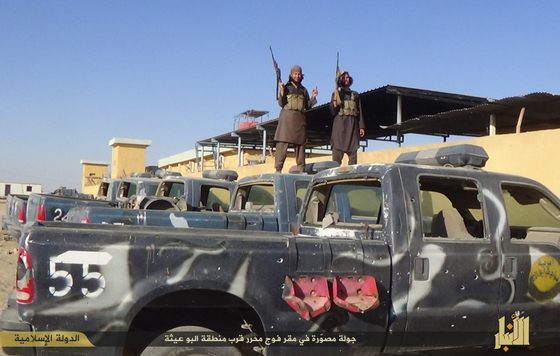
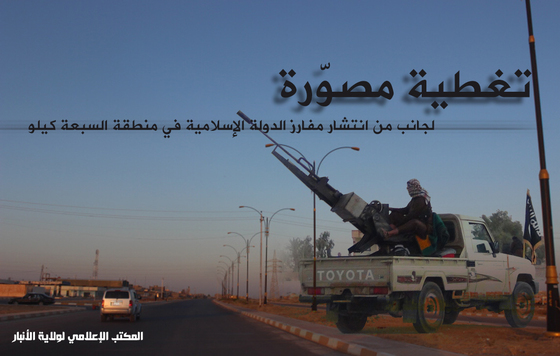
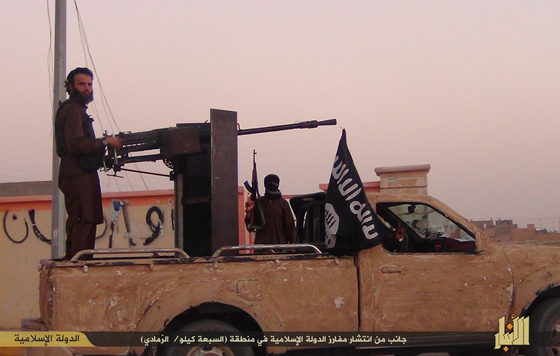
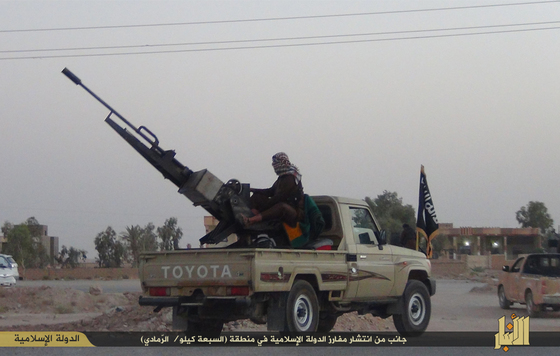
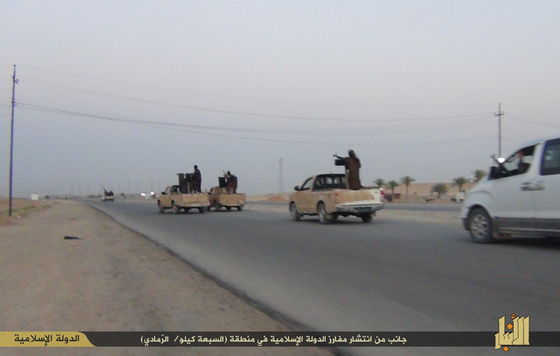
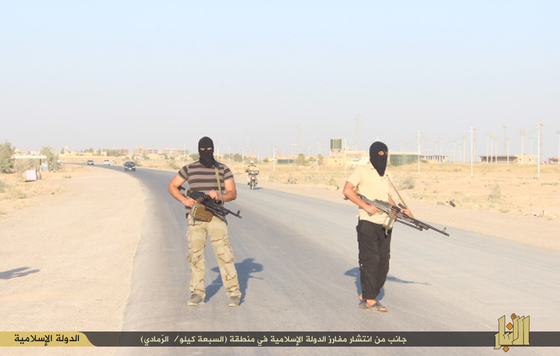
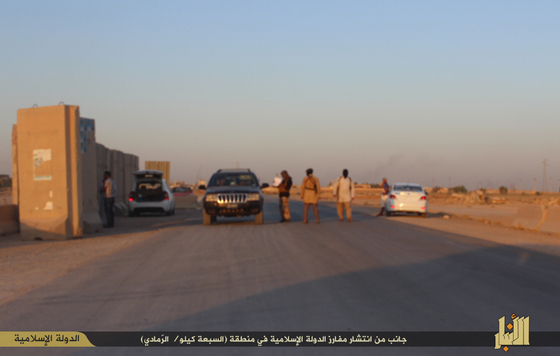
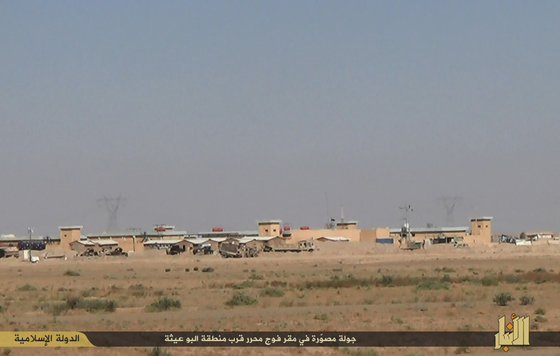
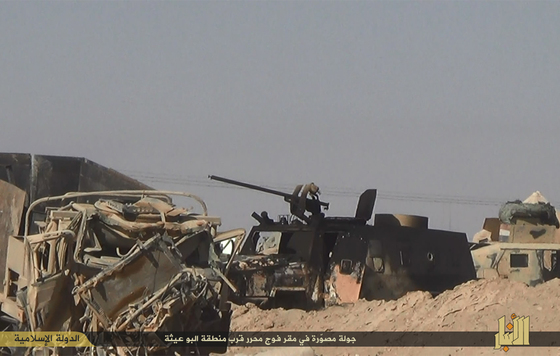
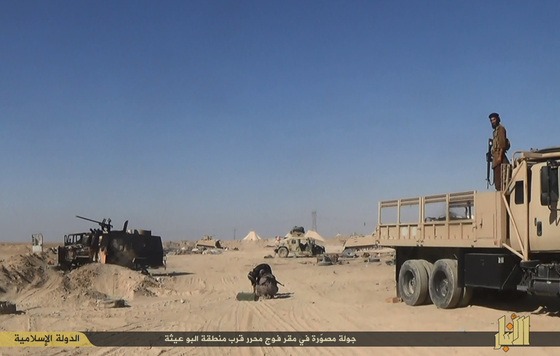
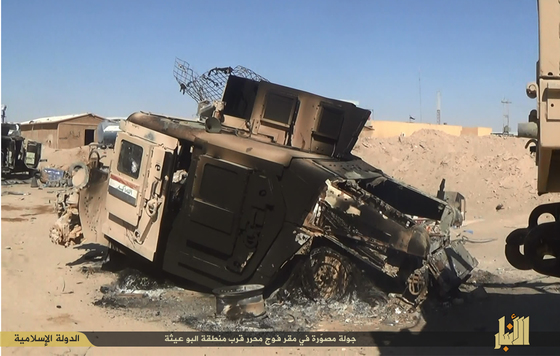
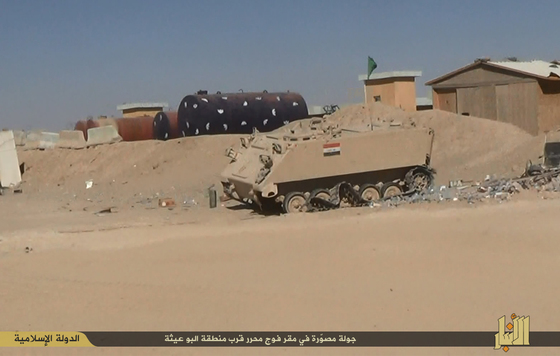
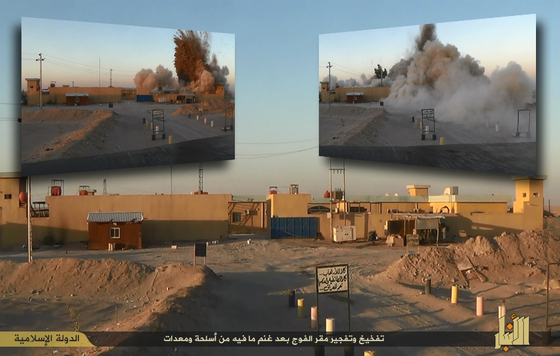







7 Comments
Maybe Kobani is a distraction to keep air power busy while ISIS implements ‘Baghdad Belts Strategy’. They are making serious moves, taking out important Iraqis.
Ramadi is going to fall.
I looked at the neighborhoods & the Western train station on google map, which are under ISIS control. Unless the IA can keep the Ia supplied via air, push reinforcements through via the roads from Baghdad or start rolling ISIS back on some front causing them to shift troops, Ramadi will fall.
There is nothing the U.S. can do to help. We cannot even impose a proper quarantine (ebola) for political or incompetency reasons. But we can spin, have the spin fall apart as facts become known by everyone and their brother and then re-spin.
Yes, we can spin.
The technical in the first photo in the lower section is photo shopped. It’s so bad I’m not sure if it’s some kind of montage attempt or what but……look at the lamp post.
Jason,
Yes, that was the ‘opening photo’ in that set. The guys that put these together often photoshop the first image for a dramatic effect. You can see through the wheels on that photoshopped technical. I think they clumsily tried to make the “look how huge we are” point.
Mike, I think Kobani is really meant to distract the Kurds, who are still making gains in Iraq. When Kobani started the US wasn’t doing airstrikes in Syria.
I know it’s different Kurdish groups, but they might have been hoping that the YPG would get assistance from their brethren in Iraq. Either way it hasn’t happened.
Bad Photoshop looks lifted from #3. Maybe that’s dropped in as well, but looks a little more realistic.
Why is Twitter blocking official handles of IS? Why is it taking sides in this war between NATO and IS that does not concern it
Or is NATO making all Americans puppets of its official policy?